@winewhiskywatches and his Breguet Tradition 7047 Fusée Tourbillon
Talking proper chronometry and passion for high-end watchmaking.

There are collectors and there are collectors… For today’s instalment of the Collector’s Series, we had a chat, or actually a long talk, with a seasoned, passionate and very knowledgeable collector who’s known under the Instagram handle @winewhiskywatches. In previous instalments, he already talked about three other watches in his (pretty impressive) collection, the infamous IWC Big Pilot Safari, the MB&F Legacy Machine 1 and the Armin Strom Mirrored Force Resonance. The latter being over-engineered time-only watches, with a strong focus on chronometry. And today’s watch, the all-mighty Breguet Tradition 7047 Grande Complication Fusée Tourbillon is exactly in the same vein. So let’s hear what winewhiskywatches has to say about this watch – and I can already tell you that he’ll shed a completely new light on this watch!
Frank Geelen, MONOCHROME – Let’s start with my standard opening question: Why Breguet?
@winewhiskywatches – The brand’s obvious and iconic status in horological history was definitely one reason. Abraham-Louis Breguet’s impact on watchmaking is still felt today, both technically and aesthetically. Of course, among Breguet’s many achievements was his invention of the Tourbillon. That made adding a Breguet Tourbillon to my collection particularly appealing.
And why the Fusée Tourbillon 7047 in particular?
I see the 7047 as being simultaneously historically relevant, technically advanced, and also one of the most avant-garde watches in the Breguet catalogue from an aesthetic perspective. Yet it’s also their most basic “Grande Complication” from the perspective of actual utility.
And that was a selling point?
It was for me. Over the years I’ve found that I and some of my collector friends eventually developed an affinity for overbuilt, time-only watches. I think that the 7047 epitomizes that philosophy. It’s almost ridiculously complex in its operation, yet it’s completely uncomplicated in its function. It houses both a massive Tourbillon and a fully visible fusée and chain on the dial side of the watch. It was the largest Tourbillon that the brand had ever put into a wristwatch – and it was their first combination of a Tourbillon with a fusée and chain constant-force mechanism. Remember that the fusée and chain device doesn’t have a long history in the context of wristwatches. They’d of course been prevalent in marine chronometers and pocket watches for three hundred years – but it took until 1994 for one to be incorporated into a wristwatch. Of course, that distinction went to A. Lange & Söhne. Nevertheless, when the 7047 was released it was, and it still is today, an incredibly rare thing to find in a wristwatch. And more so in combination with a Tourbillon on an open-worked dial. It was – and still is – as much a modern kinetic sculpture as it is a wristwatch.
Can you elaborate on what you mean by that?
Well, there are obviously a great many open-worked watches being produced today. But the open-worked watches that really captivate me are the ones that add value by virtue of being open-worked. That’s where the 7047 really excels. The design of the 7047 isn’t open-worked strictly for aesthetic appeal – it invites you into its three-dimensional movement to understand how it works. Seeing that chain snake its way around the fusée cone as you wind the crown offers an exceptional and differentiated mechanical spectacle. We’ve discussed that watches that combine fusée and chain transmissions and tourbillons are exceedingly rare, but rarer still is this level of visibility. You definitely won’t get the same visual depth with a Lange Fusée. This is different-in-kind. Of course, the ability to see an oversized 60-second Tourbillon rotate from multiple angles is also exceptionally mesmerizing. That’s a key benefit of the 7047’s domed sapphire crystal – and an experience that you couldn’t have to the same degree with a flat one. The dome also allows more light into the movement. And the lack of a bezel has allowed the watchmakers to take maximum advantage of the watch’s 41mm of real estate to deliver that spectacle.
So was the appeal of the 7047 mostly technical for you?
That was part of it, but the technical aspects and the appeal of how they’re manifested aesthetically are obviously intertwined. That’s what makes it mechanical art. The 7047’s visual appeal was also a major factor for me, particularly given that the 7047’s design is an obvious love letter to Breguet collectors. The shared design-DNA with Abraham-Louis Breguet’s ‘Souscription’ pocket watches is intentional and unmistakable. So much brand history is packed into the 7047’s 41mm case. Those elements were particularly meaningful for me in the context of my buying decision.
For readers who may not know, the Souscription watches were the 17th-century equivalent of crowdfunded projects, with a quarter of the total cost paid at the time of subscription.
The design-DNA of those Souscription movements is expressed with great reverence in the 7047. One of the things that I love about the Breguet Tradition watches in general – and this 7047 in particular – is how they draw from Abraham-Louis Breguet’s minimalist movement designs to distill extremely complex movements down to their essences. Fidelity to Breguet’s historic design DNA, both in movements and case design, make these watches feel very familiar despite their technical complexities. ‘Vintage-inspired’ cases and dials are easy, but vintage-inspired movements represent a whole other level of homage – particularly when you’re introducing new technical elements. Not many watchmakers are capable of expressing a brand’s heritage that purely.
What are some of those historic design DNA elements that stand out for you in the 7047PT?
The coin-edge case fluting, the off-centre engine-turned dial produced in galvanized gold with a Clou de Paris pattern, the heat-blued Breguet ‘moon’ hands, the brand’s iconic welded lugs, the unique serial number on the dial, the geometric shapes and the hand-peening of the bridges and plates to create a sand-blasted visual effect. Of course, the classic Roman numerals, the free-hand engraving of the Breguet logo and the finishing of the spokes inside the wheels on the back are all also reminiscent of Abraham-Louis Breguet’s pocket watches. There’s also an engraving on the back of the watch memorializing the date of Breguet’s tourbillon patent: June 23, 1801.
There’s a lot to unpack there. A lot of classic elements.
There are. The dial is a good example. It’s a traditional, hand-crafted, engine-turned guilloché dial made of solid gold that’s galvanized to create that silver colour. It’s a classically sober and legible element. It’s very easy to read despite its small size. Guilloché is one of the defining characteristics of the neo-classical style of watchmaking and it’s very closely associated with the Breguet brand. But while Breguet did pioneer engine-turned guilloché of gold and silver dials, he wasn’t the first to use guilloché. That distinction goes to John Arnold, the founder of Arnold & Son. His guilloché dials were produced roughly 20 years earlier than Breguet’s and they were different in that they were made of enamel, but their proportions and layout were identical to Breguet’s engine-turned metal dials. That’s not a coincidence. I love this story because it’s something that most of us today can relate to. John Arnold, who was one of the greatest ever in his field, realized that he could teach almost anyone but his own son. But he apparently loved his son enough to recognize that reality and accept it.
So he asked Abraham Louis-Breguet to take on his son as his apprentice. When he agreed, John Arnold offered Breguet free license to use all of his patented and unpatented inventions and innovations, without limitation. One of those was the guilloché dial. Guilloché dials have come much more into fashion in the last few years, particularly among the independents. But I think it’s fair to say that the Breguet brand deserves most of the credit for keeping that art form alive. Breguet invested heavily in training their craftspeople to bring those skills back after the quartz crisis. They had to train their craftspeople in what at that point was an almost-lost art form. Before long their dial needs exceeded all of Switzerland’s surviving production capacity – so Breguet had to train a new generation to use the Rose Engine Lathe.
You also mentioned Breguet’s ‘peening’ of the bridges and plates on the 7047. Can you also elaborate on that a bit?
Breguet relied on a historically traditional, but rarely-seen finishing technique known as ‘peening’ for the watch’s anthracite alloy backplate and bridges. That’s what gives them their gritty texture. The process was historically intended to increase the hardness of the metal. It’s easy to confuse its appearance with sandblasting, but that’s not how the effect is achieved here. That would’ve been too easy. Here the surface of the metal is hand-hammered with a concave tool to create tiny indentations in the metal – small ‘craters’ around the tip of the tool. It’s a meticulous process. There seems to be some variation in the amount of peening from one watch to another. I prefer the grittier look and I was fortunate to have acquired a great example with a lot of texture. Some other aspects of the finishing embrace the highest of modern standards, including black-polished screw heads, mirrored Anglage on the edge of every half-bridge and high polish on the balance wheel adjustment screws. Look at the Anglage performed on the titanium Tourbillon bridge: those sharp interior angles could only have been made by hand using a file. But the 7047’s fusion of past and present finishing techniques feels seamless – and nothing seems incongruent.
As the 7047 is such a technical watch, I feel like this interview would be incomplete without diving further into some of its technical details and distinctions…
The 7047 really is a ‘Technical Watch’ in every sense…whether you focus on the power challenges that it had to overcome to power its massive Tourbillon, the use of a fusee and chain constant force power transmission, the use of a barrel containing two mainsprings and even their patented power reserve indicator on the barrel itself.
Let’s start with Constant Force transmission. The key thing to appreciate about a Constant Force mechanism is that an ordinary watch becomes less accurate as its mainspring unwinds. So if you want your watch to be as accurate towards the end of its power reserve as it was at the beginning, you’ll need one with a constant force mechanism to provide the necessary torque consistency to maintain a consistent oscillation rate. By supplying a continuous flow of energy to a well-regulated movement – regardless of the actual degree of tension remaining in the mainspring – the issue evaporates.
Fusée and Chain mechanisms were historically used mainly in marine chronometers because the chronometric consistency that they provided was so critical for navigation. Their purpose was to enable sailors to figure out where they were. Latitude can be measured by the sun or stars but longitude requires you to know the time at a specific location, typically the home port. So the longer you were at sea, the more important chronometric consistency became. It was ok for a marine chronometer to gain or lose time – that was to be expected – but the goal was to have that chronometer gain or lose precisely the same number of seconds every day so that the variation could be incorporated into the navigator’s calculations. Arrival at their intended destination, the safety of the ship and the lives of the ship’s crew depended on that chronometric consistency.
By the way, it seems clear to me why a Fusée and Chain was chosen rather than a Remontoire. Either one would’ve done the job, but In the 7047 that 180-link fusée and chain contributes more than just consistent torque. It provides a key visual element that adds aesthetic merit to the design. I don’t think that the 7047 would’ve had the same visceral impact without it.
Moving on to the one-minute Tourbillon, you’d have to start with its size. It’s a beast. The 17mm tourbillon cage and 13mm balance wheel are huge in comparison to what you see from every other major brand. And the cage design was directly inspired by Abraham-Louis Breguet’s drawings of his original Tourbillon from his patent application in 1801. The power requirements of that beast would have made it entirely impractical from an operational perspective if Breguet had relied on traditional materials, so they didn’t. They used titanium for the Tourbillon cage, balance wheel and Tourbillon bridge. This approach was so innovative that Breguet was granted a patent for their titanium balance wheel and three more for their silicon-based balance springs.
That raises an interesting question: What do you think of the controversy around the Breguet brand’s use of modern materials such as silicon and titanium in this watch?
I understand that some collectors have an issue with the use of modern materials in watchmaking, but I’m not one of them. Breguet’s use of titanium is what made the enormous Tourbillon in this watch feasible – because it dramatically reduced the weight of the Tourbillon cage. That’s a trade-off that makes a lot of aesthetic sense to me. I have a similar view when it comes to Breguet’s use of silicon. Silicon is anti-magnetic, more flexible, corrosion-resistant, and more resilient to extreme temperatures – and it doesn’t require lubrication. Steel escapement wheels require lubrication to prevent wear, but silicon escapement wheels don’t require that lubrication. It’s also a lighter material – thereby reducing the influence of gravity. And isn’t that the point of a Tourbillon in the first place? If the goal was to produce the best possible watch while respecting Breguet’s innovations and pragmatic design codes, then I think that they hit it out of the park.
The common refrain by some collectors against these materials is that silicon and titanium weren’t available to the great watchmakers of the past – and that this fact somehow relegates them to being ‘invalid’ choices now. But it’s my view that Breguet never shied away from innovation. While much of the technical execution of the 7047 is modern; I think that it’s arguably representative of the sort of innovation that Breguet himself might well have embraced if these modern materials had been available to him in his era. I suspect that Breguet wouldn’t have excluded either silicon or titanium from consideration had they been available to him.
And I do think that Breguet really did its best to avoid that controversy while also pursuing its technical vision. For example, in a clever nod to tradition, Breguet shaped the silicium balance spring in the 7047 to put a ‘Breguet curve’ on it. As you know, the Breguet Overcoil was created as a simple solution for inconsistent power delivery. In fact, the Fusée and Chain also originated as a method of addressing the inconsistent torque of a mainspring – which was a very serious issue until the Breguet Overcoil was invented. With the advent of silicon, Breguet had obtained excellent results with flat silicon balance springs. But for the 7047, mere performance wasn’t good enough. The Breguet development team thought that the Breguet curve was an important aesthetic element for the balance spring of the 7047 from a brand-heritage perspective. That’s particularly noteworthy because Silicium is a silicon-based material that doesn’t suffer from the properties that the Breguet Overcoil was created to overcome. And the technical challenge of forming that curve in a silicon-based balance spring required a significant investment in R&D and a new production process. I think that their efforts exemplified the brand’s commitment to honouring Breguet’s historic design DNA in the 7047 – even as they elected to pursue every available technical advantage. An ironic footnote is that honouring him in this way required the team to disregard Breguet’s mantra of “usefulness over beauty” [laugh].
The 7047 very obviously pays tribute to Breguet’s historic pocket watches; but like some of your other watches, I think it also exudes modern-art and steampunk vibes.
I agree. I’m guessing that’s why it was chosen to be worn by Ben Affleck in his gritty portrayal of Batman in the Zack Snyder films. I doubt that it was chosen based on any of its horological merits! It does speak to the timeless modern-art edginess of Abraham-Louis Breguet’s aesthetic sensibility that they chose it. The design DNA of the 7047 feels remarkably contemporary and relevant despite being hundreds of years old. And by the way, if you look at the photos of Zack Snyder’s iteration of the Batmobile, you could easily conclude that the aesthetics of the 7047 provided the original inspiration for that design.
What surprised you about the Breguet 7047?
It’s very comfortable on the wrist, particularly for a platinum watch. I’ve had trouble wearing some other platinum watches for more than a few hours, but I can wear this watch all day, every day. It also wears smaller than you’d expect as much of its height is attributable to the exaggerated domed sapphire crystal that bulges out from the case by 3.6 mm. Some people dislike the crystal for that reason, but I love it. It was clearly intended to create an observatory effect for its vintage-inspired movement – and it succeeds in exposing the depth and layers of the movement in a more three-dimensional way. I hadn’t necessarily thought about that before acquiring it, but after owning it I understood that the visual benefits easily justify the additional height. It probably comes down to whether you’d rather look at your watch or into it.
Another surprise was how versatile the 7047 is with different strap colours and materials. You only ever see this watch photographed with a black alligator, but the monochromatic dial looks great with other colours. So far I’ve tried light brown, burgundy, light grey, dark grey and yellow – and they all look great.
So does your 7047 get a lot of wrist time?
It does. I don’t just wear it for special occasions. I’ll often wear it with a t-shirt and jeans – and I enjoy having it on my wrist even when I’m just sitting around at home with time to appreciate the show that it provides.
Does the 7047’s oversized Tourbillon attract much attention?
Mostly only from other watch collectors. This watch is a flex for watch collectors, but just a curiosity for everyone else. Occasionally I’ll get asked, “Is that a Tourbillon”? Of course, the next question is “what does it cost?” I try to avoid answering that one as I expect reactions similar to what my own would have been fifteen or so years ago. Surprisingly, no one ever asks about the fusée.
How well do you think that the Breguet 7047PT co-exists with other pieces in your collection?
Like many collectors, I try to have some sort of rationale for each new acquisition in the context of the rest of my collection. I don’t always succeed, but not every acquisition needs to be entirely rational. In this case, I’ve rationalized it in three ways:
First, as I mentioned earlier, I do have a passion for open-worked watches, particularly those that offer visual insights into the mechanical functioning of a watch by virtue of being open-worked. From that perspective, the 7047 fits in perfectly with several of my watches. For example, my ‘piece unique’ tourbillon collaboration with Armin Strom offers the mechanical insight of seeing twin barrels turn as I wind it. Then there’s my Armin Strom Resonance – which puts the resonance phenomenon front and center on its open-worked dial. My Roger Dubuis Excalibur Carbon Skeleton has a dial-side micro-rotor that adds some animation to that watch when my wrist is in motion. My MB&F Legacy Machine One isn’t open-worked, but it does provide a similar sort of visual insight by situating its oversized balance wheel on the dial side of the watch.
Voir cette publication sur Instagram
My second thematic justification is tied to the 7047’s core mission as a complex, time-only precision timekeeper. My aforementioned dual-barrel Armin Strom tourbillon and my resonance watches are also over-engineered time-only watches that can be said to reflect a ‘complex time-only’ theme. The 7047’s only complication is its power reserve. Torque consistency doesn’t count as a complication, but getting there requires so much technical complexity that the 7047 is officially called a ‘Grande Complication.’ The über-rare combination of a Tourbillon and a constant-force Fusée and Chain mechanism makes the 7047 an anchor piece from that thematic perspective.
If all else fails, I suppose that I can thematically rely on the fact that I try to own an icon of each brand that I add to my collection – and the 7047 is arguably the best representative of Breguet’s historical design DNA. Many Breguet watches don’t seem to share any design DNA with the historical watches produced by the brand’s namesake…but this one clearly does. I’d known for a while that if I was only going to own one Breguet, it was going to be this one. Now a purist would likely argue that the yellow gold iteration was the truest homage to Breguet’s historic design DNA – and they’d likely be right – but I live a casual life and I like to wear my watches – so a white metal iteration offers me a greater opportunity to actually wear my grail more often. And truth be told, I actually like this iteration better too. As you know, I tend to favour monochromatic watches anyway, so this iteration made the most sense for me.
I’ll offer one more potential theme. You seem to have a thing for domed crystals…
You’re right. I do. This is my third watch that has one. My MB&F Legacy Machine One has an even bigger dome of course – while my Panerai PAM 520 has an acrylic dome that’s more in keeping with the vintage aesthetic of that watch. In the 7047, the domed sapphire crystal is intended to be reminiscent of the domed acrylic crystals found on vintage watches; while also enabling key movement elements to be showcased from various angles.
Voir cette publication sur Instagram
Why do you think the 7047 doesn’t get more attention from collectors on social media than it does? When you see it in the metal, it seems clear that it merits much more attention than it gets…
I think that there are two reasons. First, not many people aspire to a $190,000 dollar wristwatch. My understanding is that Breguet makes very few of these – which is understandable for a watch at this price point. It’s a very limited market. It simply doesn’t enter the public consciousness in the way that a Journe Chronometre Bleu or Patek 5711 Nautilus or an AP Royal Oak 15202 Jumbo have. That’s because, unlike those watches, the high MSRP of the 7047 means that there’s no point in dreaming about obtaining a 7047 at a low entry price. That absolute reality inhibits the broader market from obsessing about it. And the result is that It’s largely excluded from the social media conversation. Second, the association with Swatch is ironically a handicap for the brand despite the financial stability and access to capital that the Swatch acquisition provided. But to be fair, Breguet hasn’t shown itself to be very adept at navigating or leveraging social media either.
Is the 7047 a watch to keep or might you sell it at some point?
I only do interviews about watches that I can’t imagine selling. That’s a litmus test for me because it feels like I’m vouching for a watch that I own when I participate in an interview about it. I love this watch. I think that it’s a masterclass in high-end watchmaking. It consolidates centuries of accumulated horological knowledge to synthesize the innovations of the past and the present. It reveres Breguet’s original design codes – but it executes them using modern methods and materials to enhance the visual impact of the tourbillon and to make the watch more durable and resilient. And it also keeps great time.
So what’s next for your collection?
As you may recall, I appreciate resonance watches for a similar reason to why I purchased this 7047PT: an abiding appreciation for technical innovation that focuses on chronometric precision and consistency. I’m hoping to add a few more watches with that theme in mind.
Any parting thoughts about the 7047?
Not being a watchmaker myself, I’m sure that I’m incapable of fully appreciating the complexities involved in engineering a watch like this. But I do think that anyone with even a basic understanding can appreciate the 7047’s technical innovation and how so much of it was driven by an institutional reverence for Breguet’s accomplishments and his pragmatic approach to movement design.

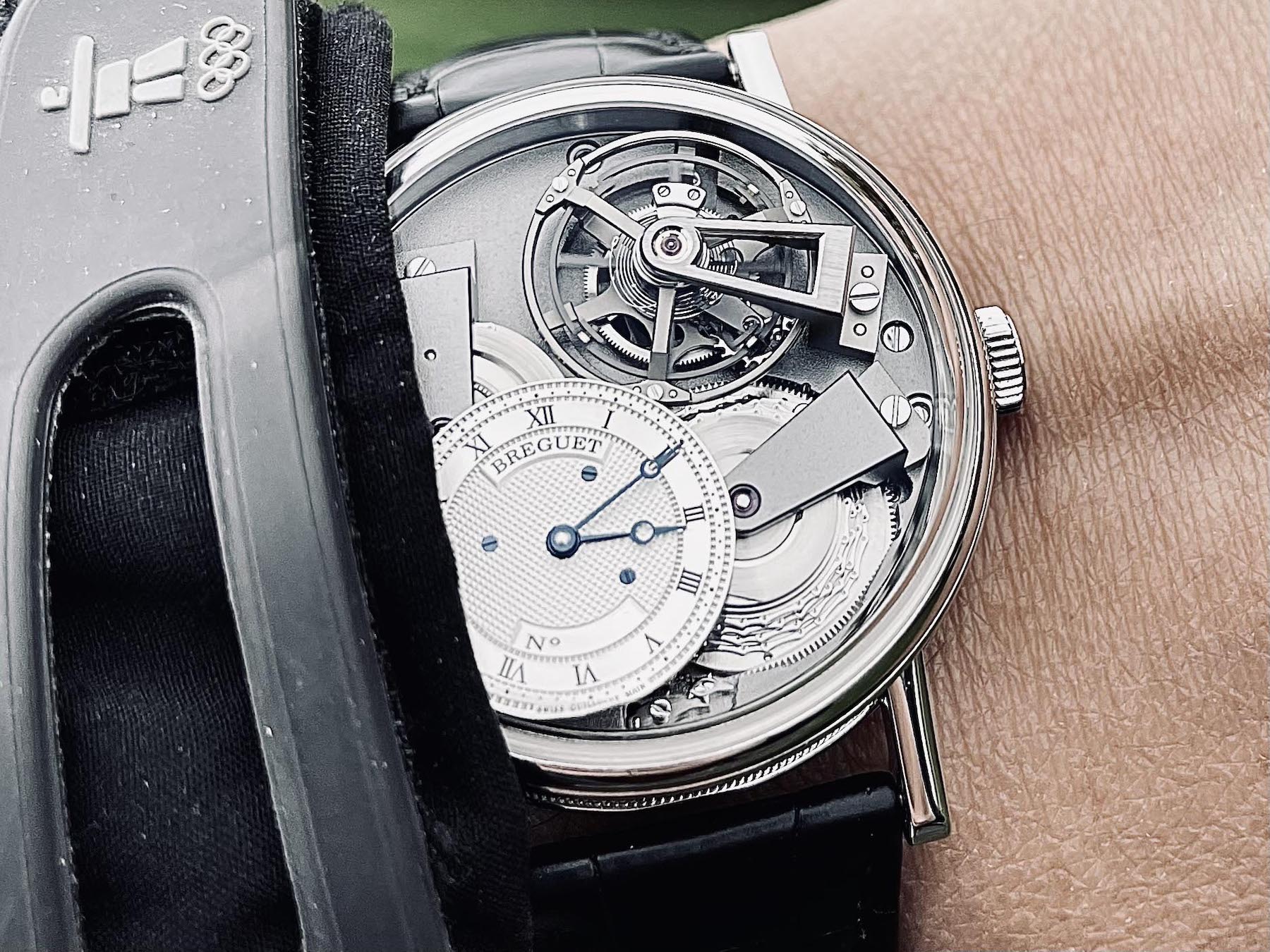
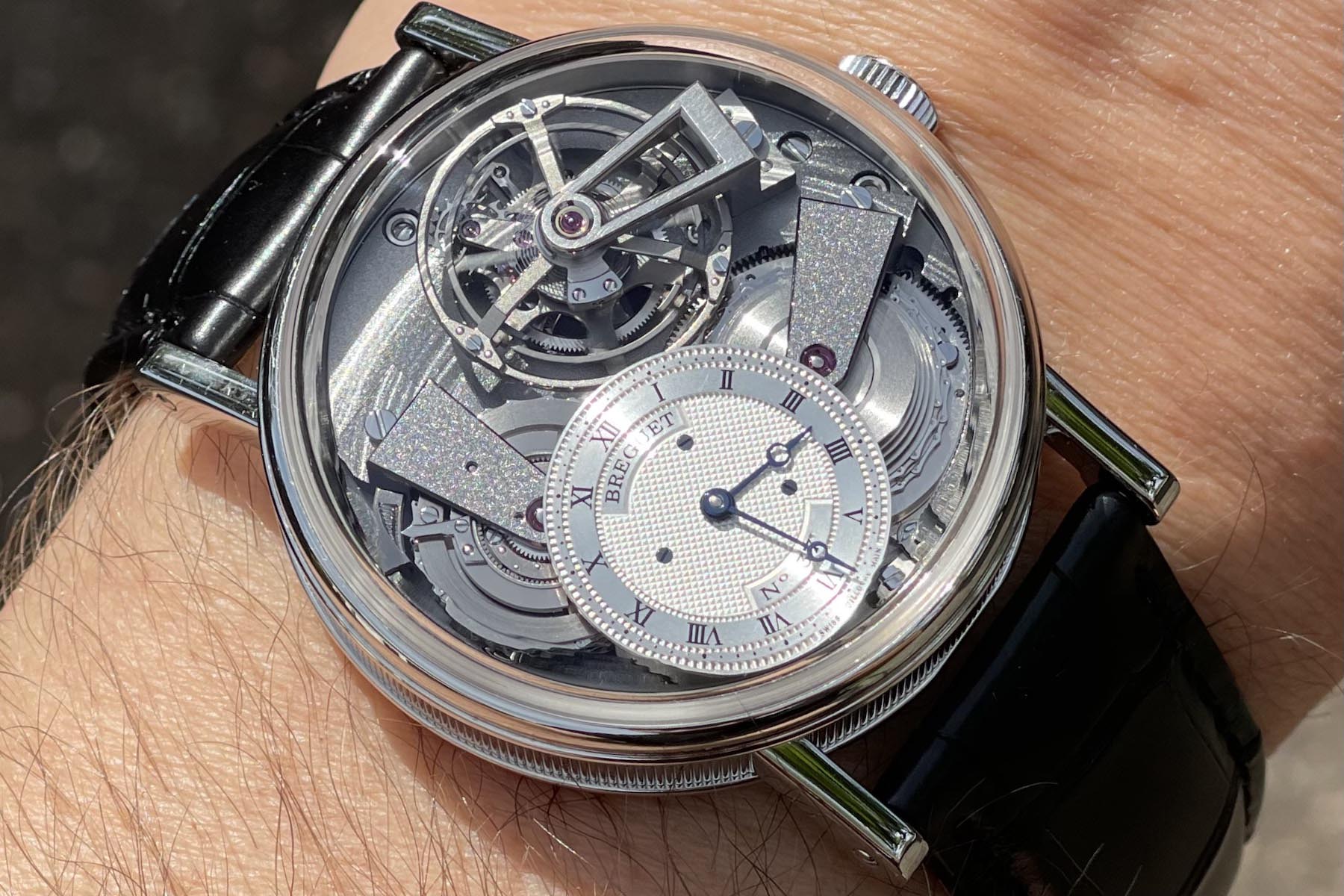

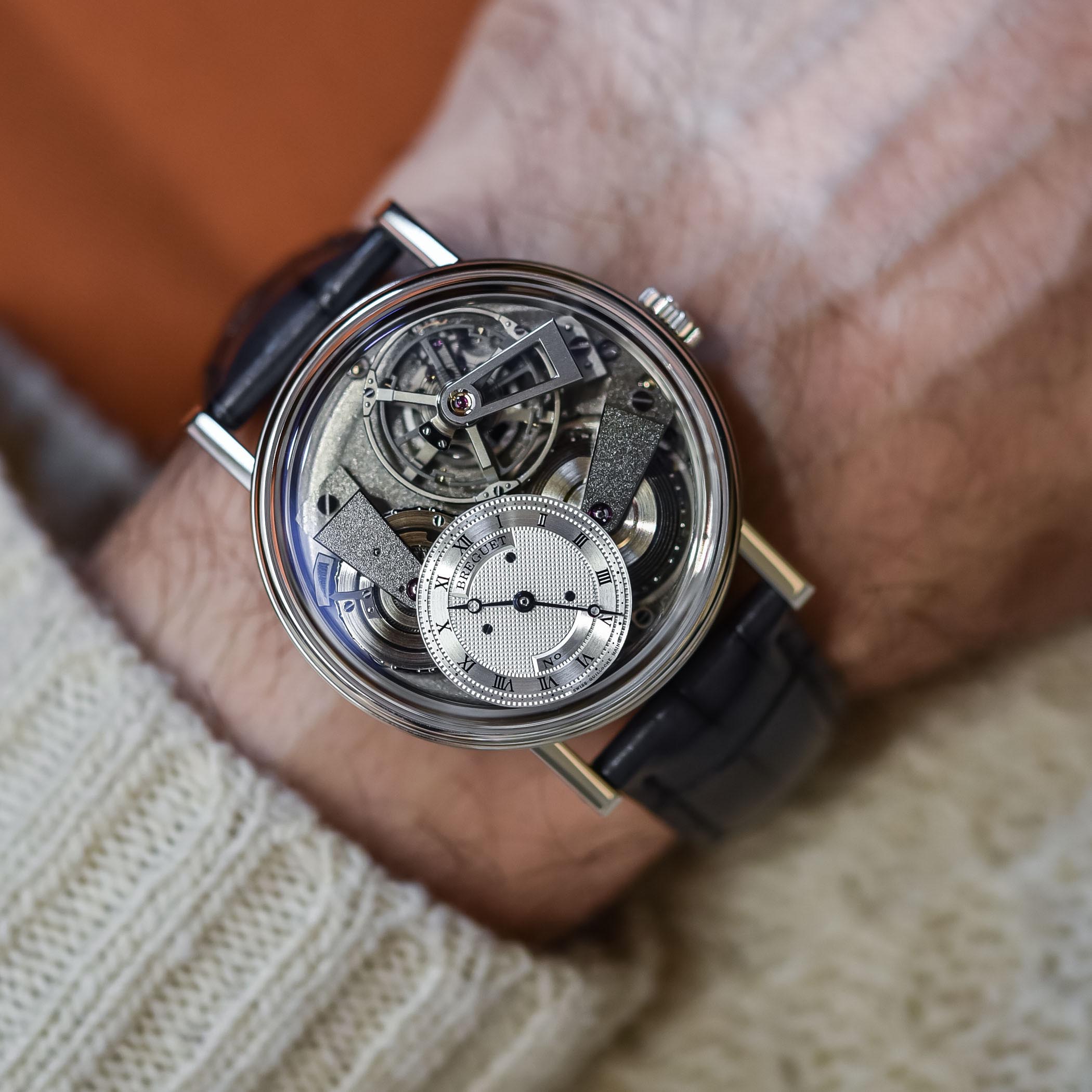
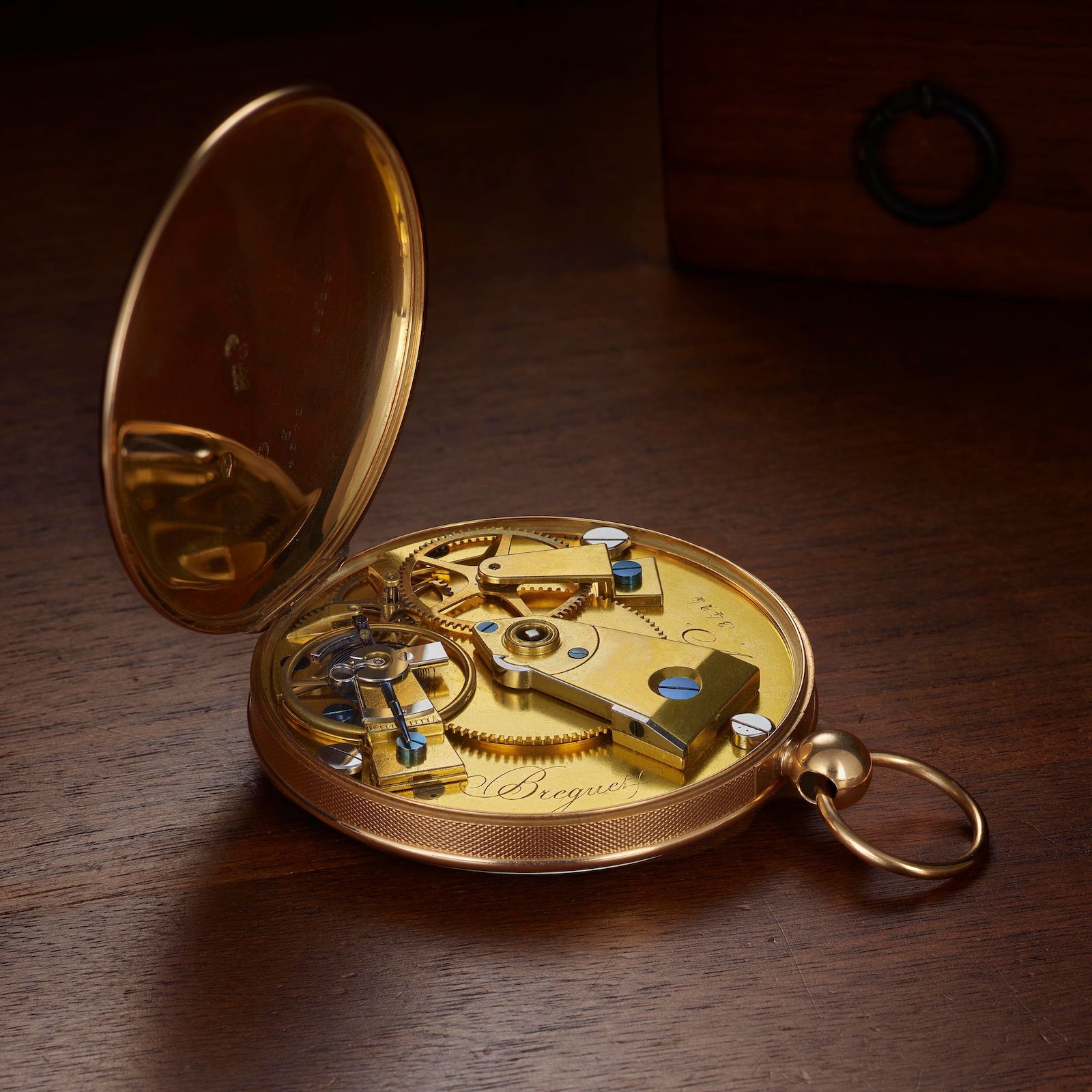

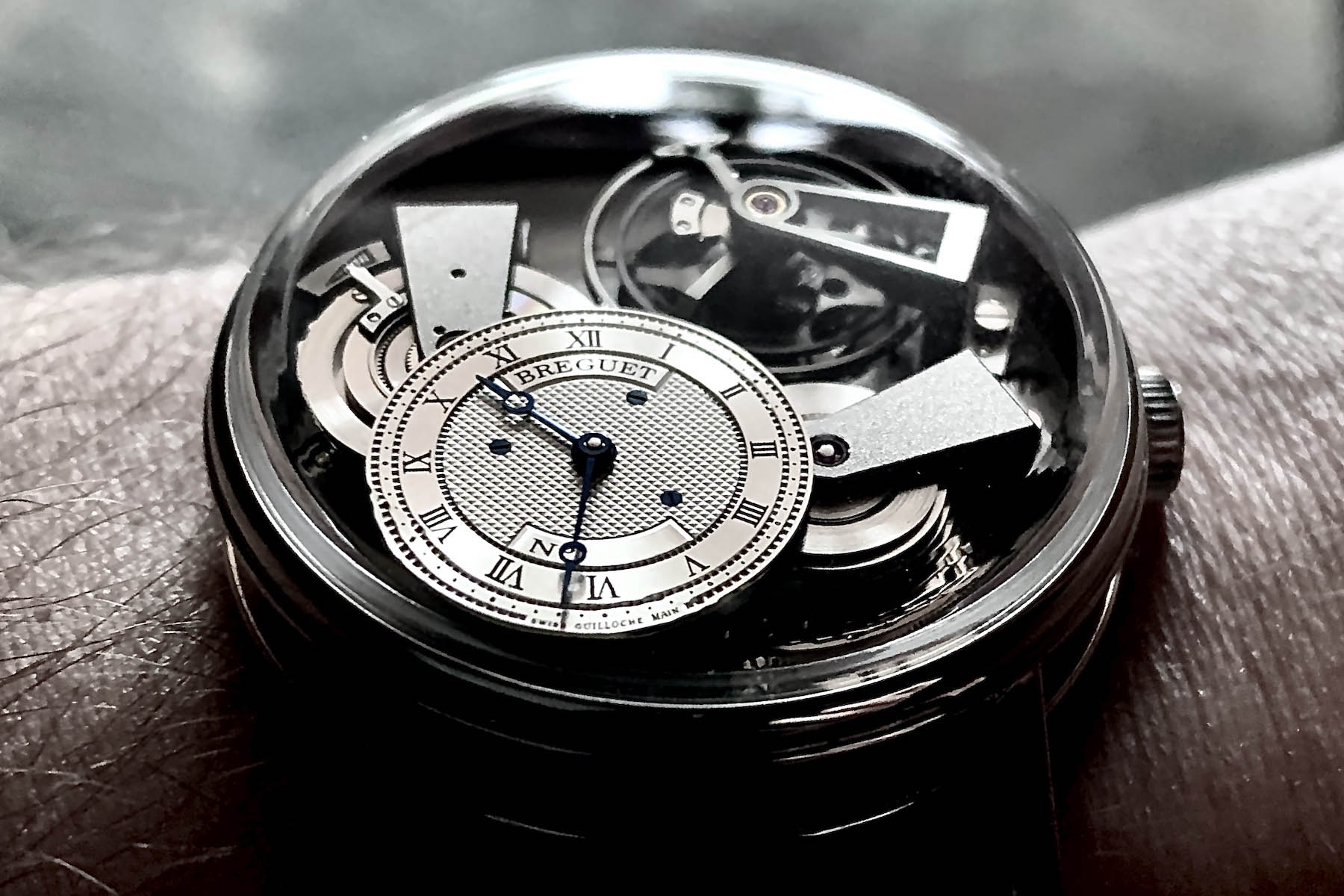
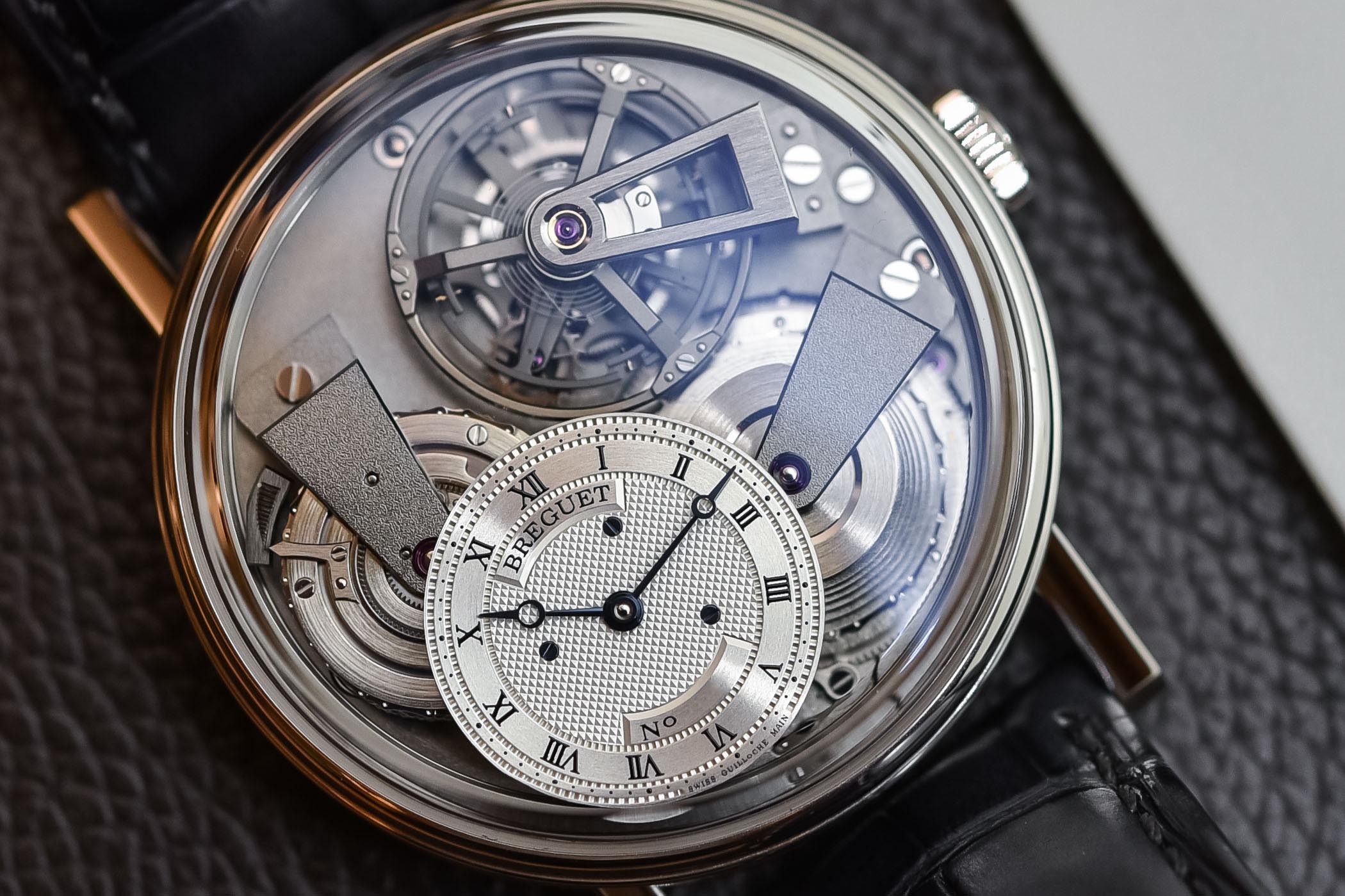
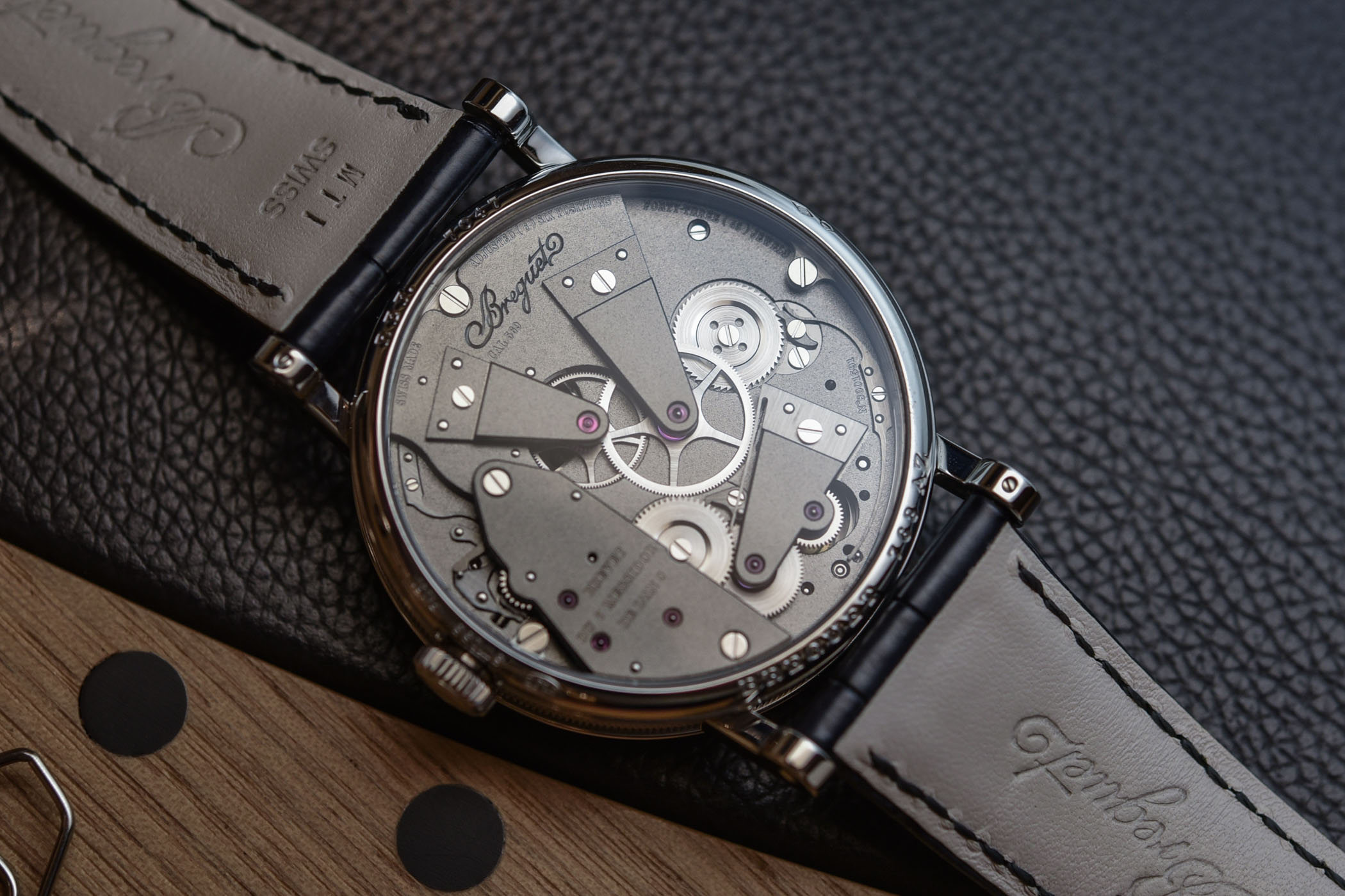
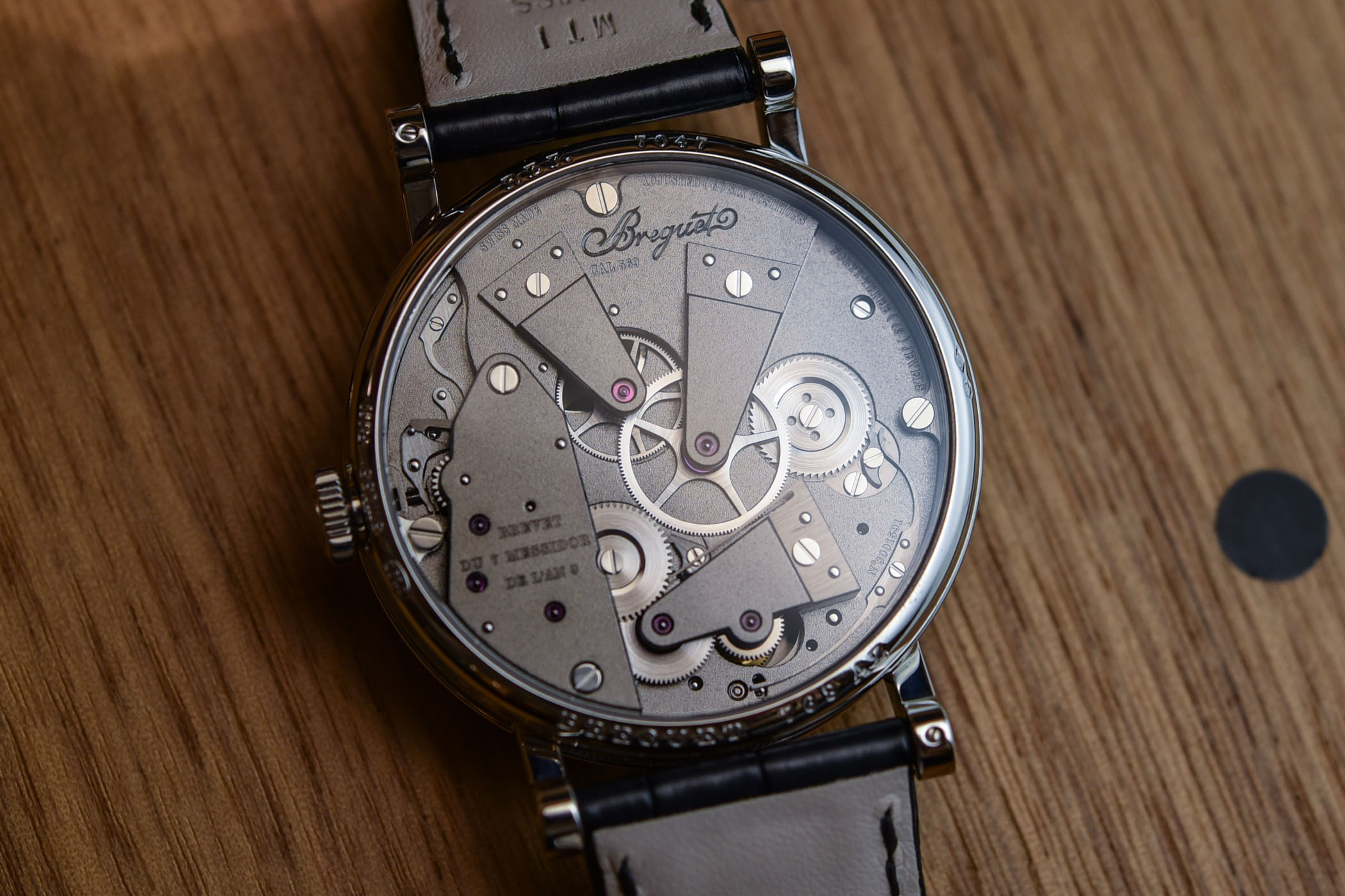
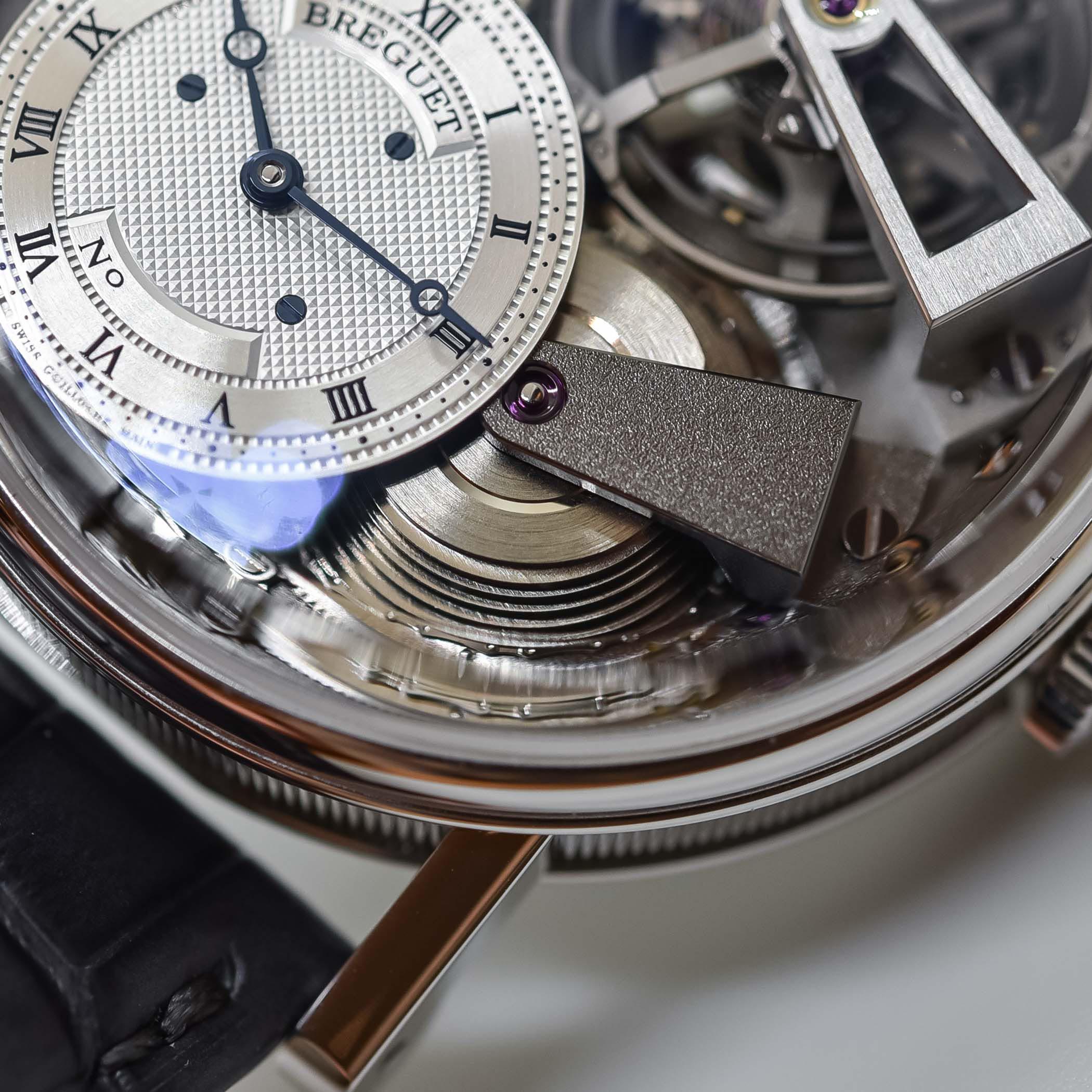
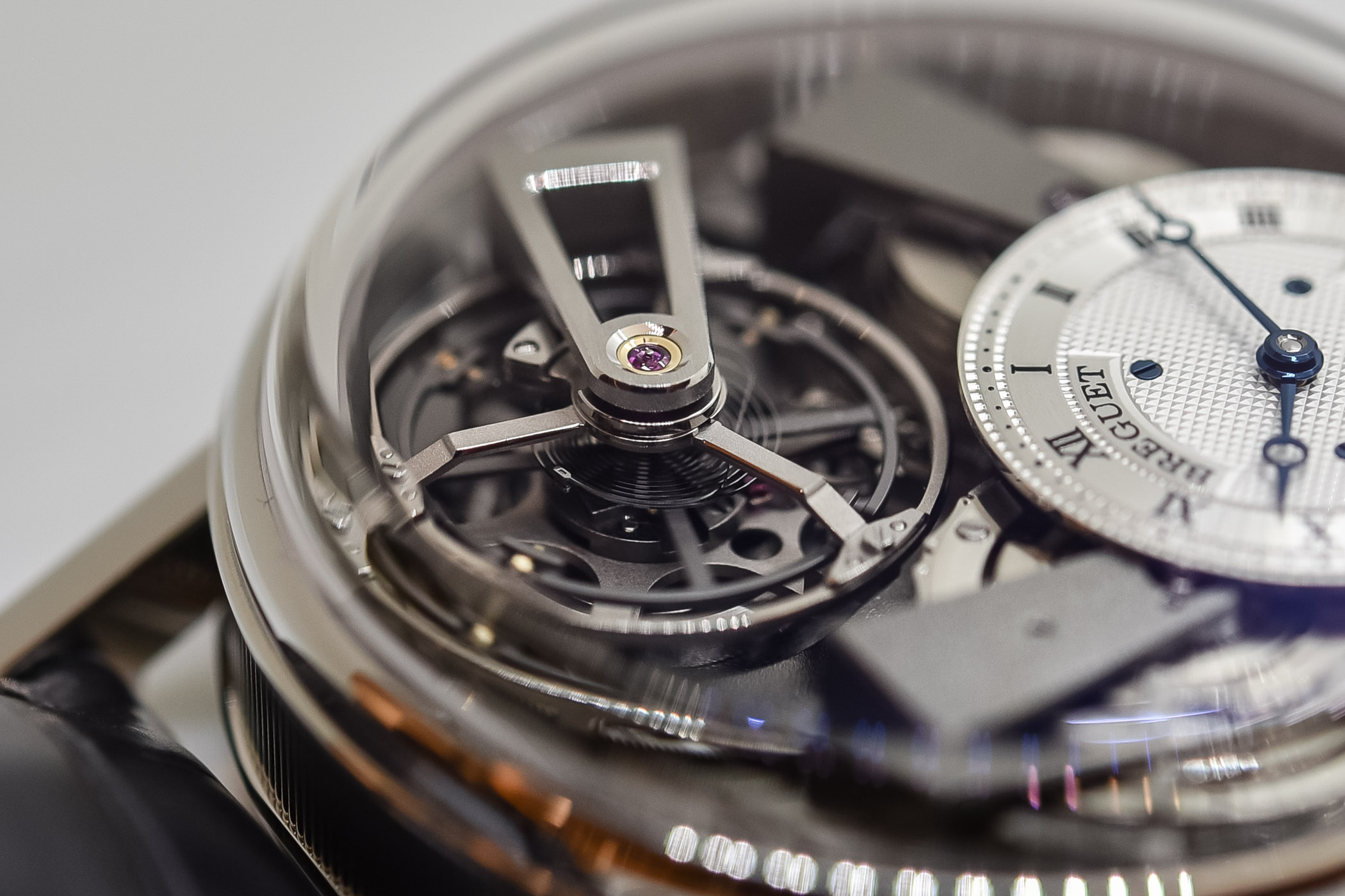
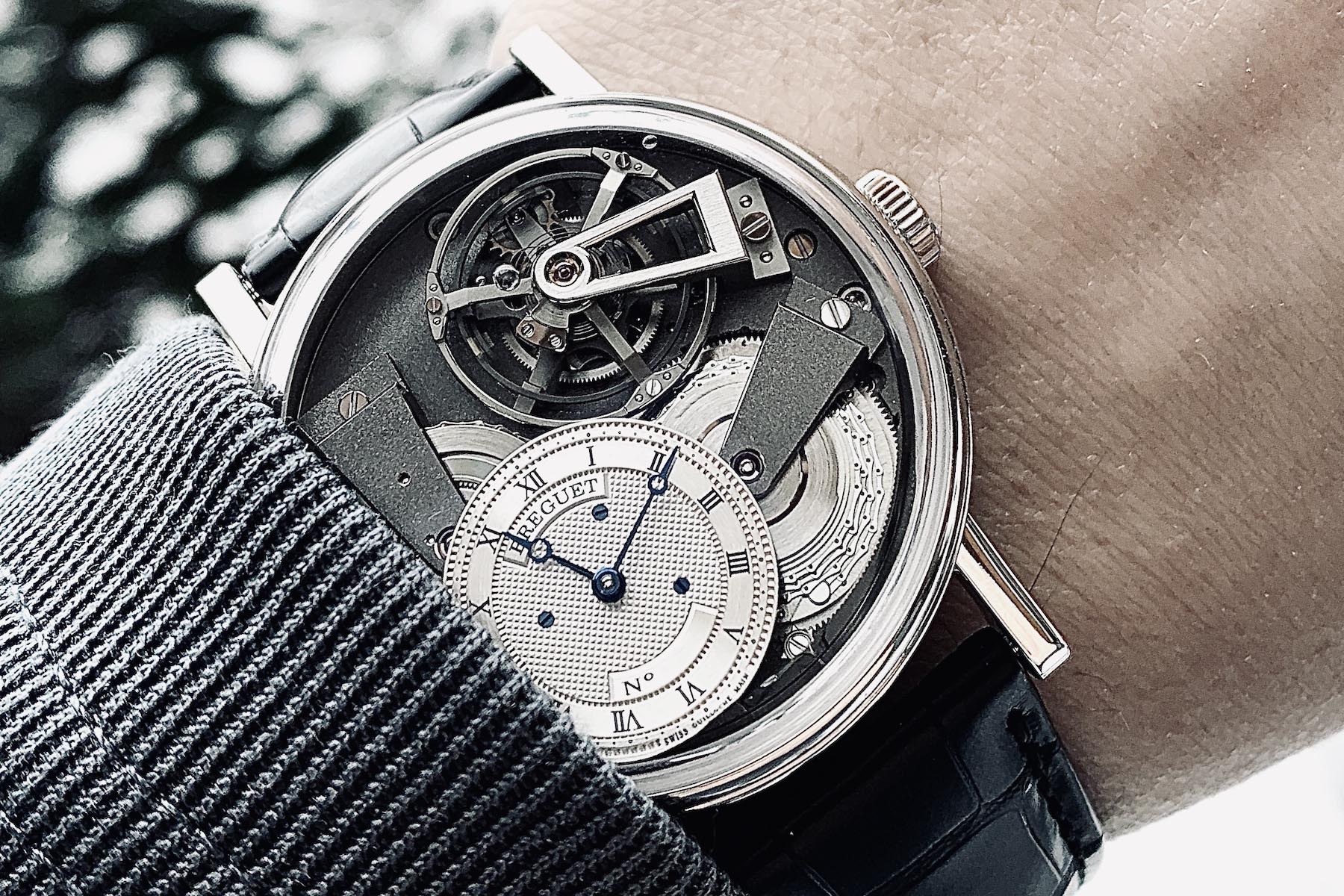

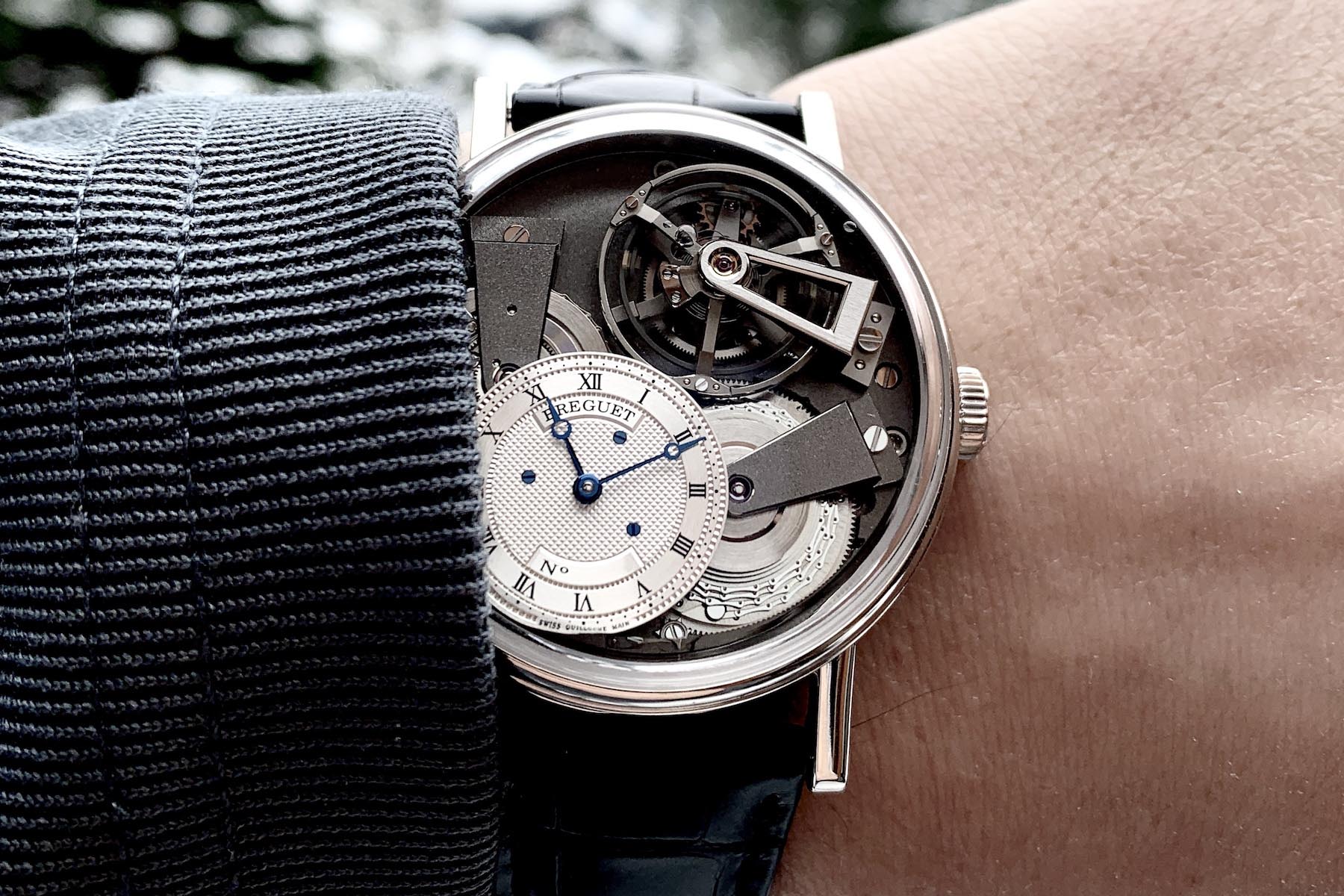
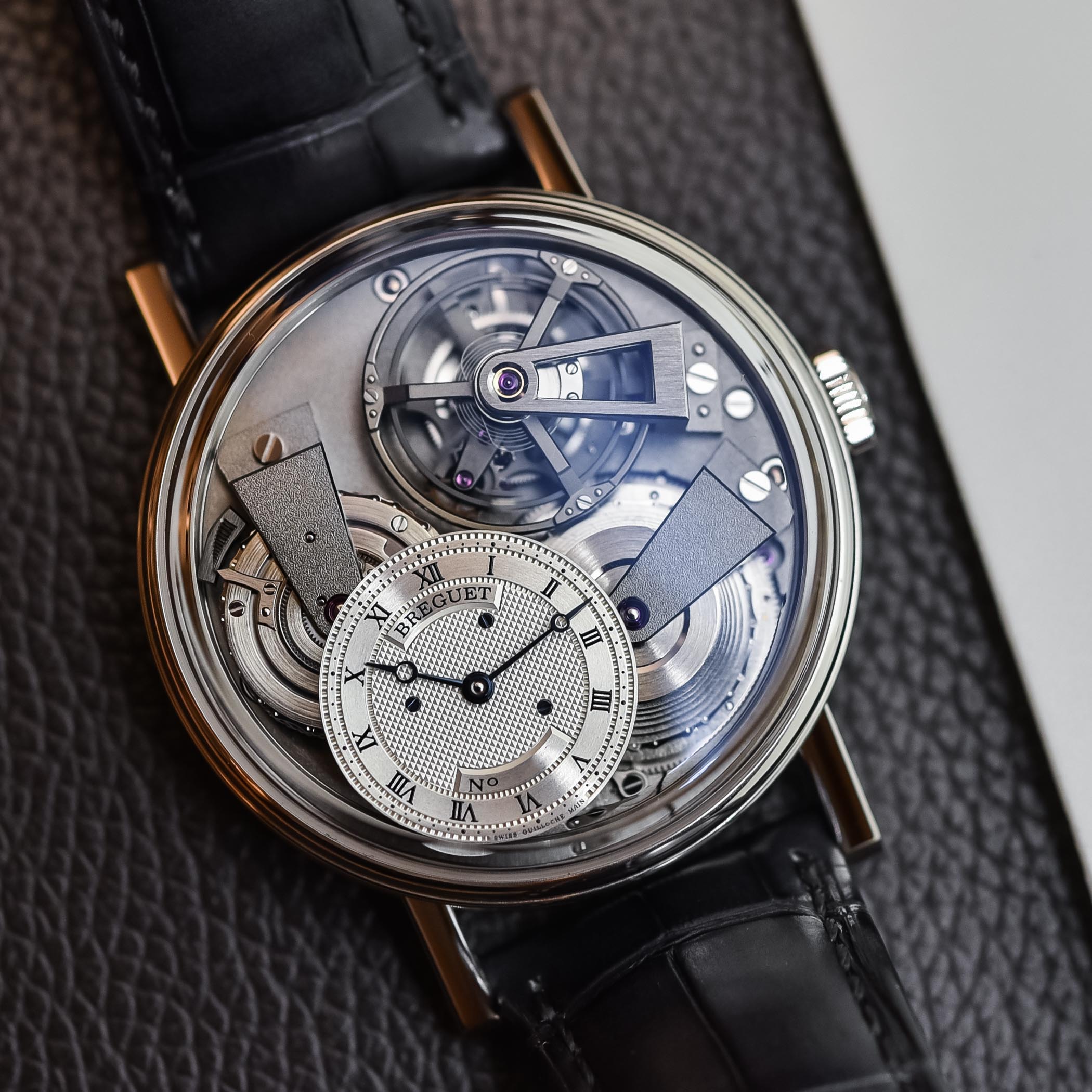



4 responses
So this has a silicon overcoil? Never knew that, extremely impressive.
Simply an astoundingly complex beauty. A side note on the peening finish to increase hardness. A similar process is still in use in making jewelry today. After heating metal and forming a ring it is hammered to rearrange the molecules of the metal to harden the ring. I would have enjoyed a closer look at the fusee chain to be able to enjoy it as an outstanding piece of construction. Congrats on your ownership and its good to see someone who actually wears their watches instead of hiding them in a safe.
Very good interview. I am now following on IG. For someone who is not a watchmaker, the background knowledge is impressive.
Thank you for the kind feedback Shirl! I’ll have to remember to take and post some photos in my Instagram Story to highlight the fusée chain. (There’s one there now). I was aware that peening was used in jewelry, but I wasn’t aware that the process is still prevalent today.